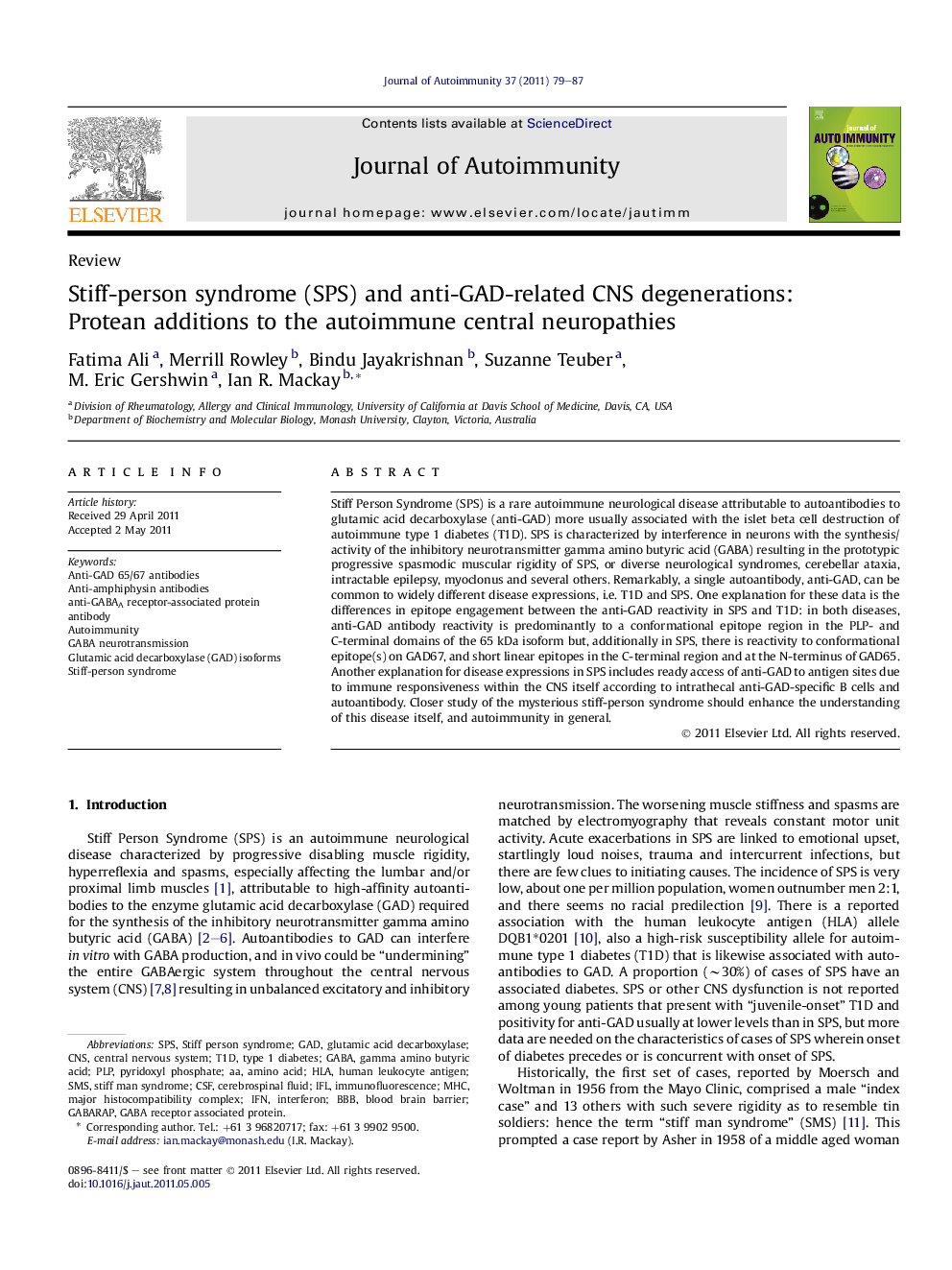| Article ID | Journal | Published Year | Pages | File Type |
|---|---|---|---|---|
| 3367965 | Journal of Autoimmunity | 2011 | 9 Pages |
Stiff Person Syndrome (SPS) is a rare autoimmune neurological disease attributable to autoantibodies to glutamic acid decarboxylase (anti-GAD) more usually associated with the islet beta cell destruction of autoimmune type 1 diabetes (T1D). SPS is characterized by interference in neurons with the synthesis/activity of the inhibitory neurotransmitter gamma amino butyric acid (GABA) resulting in the prototypic progressive spasmodic muscular rigidity of SPS, or diverse neurological syndromes, cerebellar ataxia, intractable epilepsy, myoclonus and several others. Remarkably, a single autoantibody, anti-GAD, can be common to widely different disease expressions, i.e. T1D and SPS. One explanation for these data is the differences in epitope engagement between the anti-GAD reactivity in SPS and T1D: in both diseases, anti-GAD antibody reactivity is predominantly to a conformational epitope region in the PLP- and C-terminal domains of the 65 kDa isoform but, additionally in SPS, there is reactivity to conformational epitope(s) on GAD67, and short linear epitopes in the C-terminal region and at the N-terminus of GAD65. Another explanation for disease expressions in SPS includes ready access of anti-GAD to antigen sites due to immune responsiveness within the CNS itself according to intrathecal anti-GAD-specific B cells and autoantibody. Closer study of the mysterious stiff-person syndrome should enhance the understanding of this disease itself, and autoimmunity in general.
